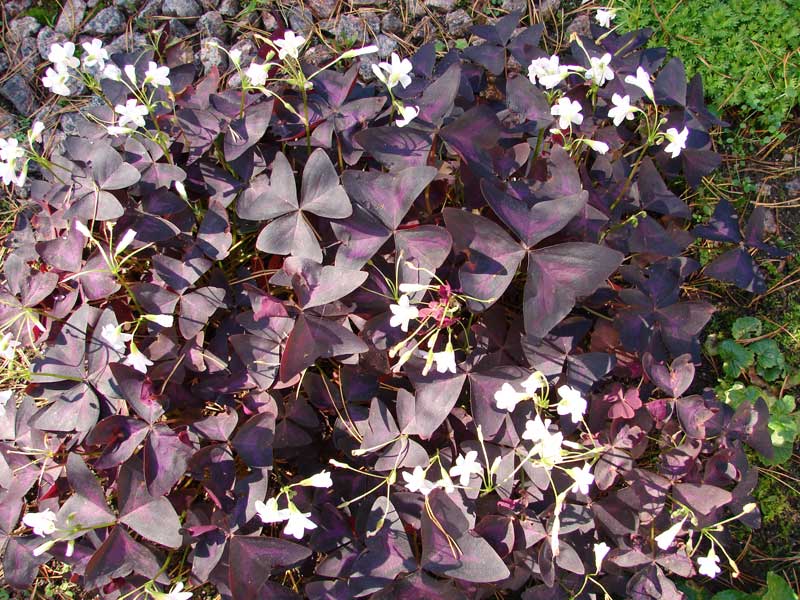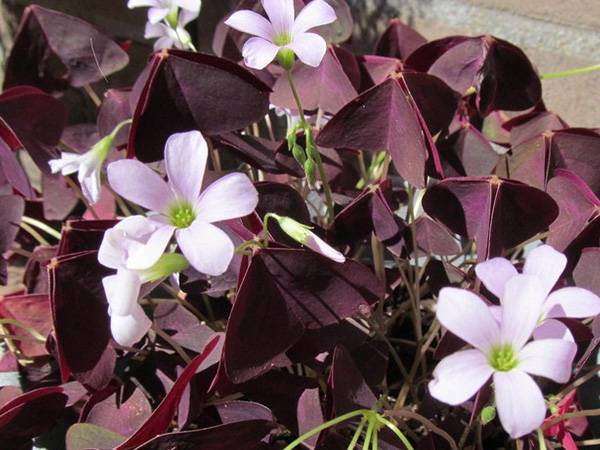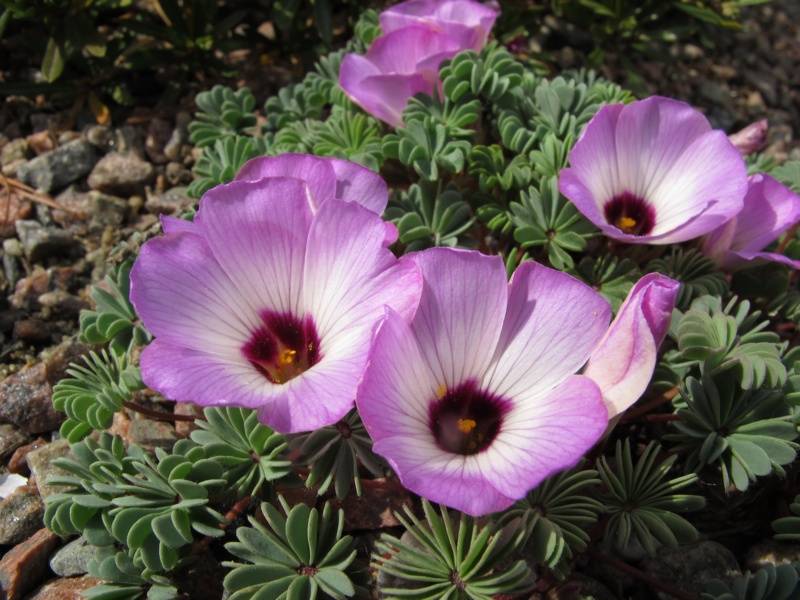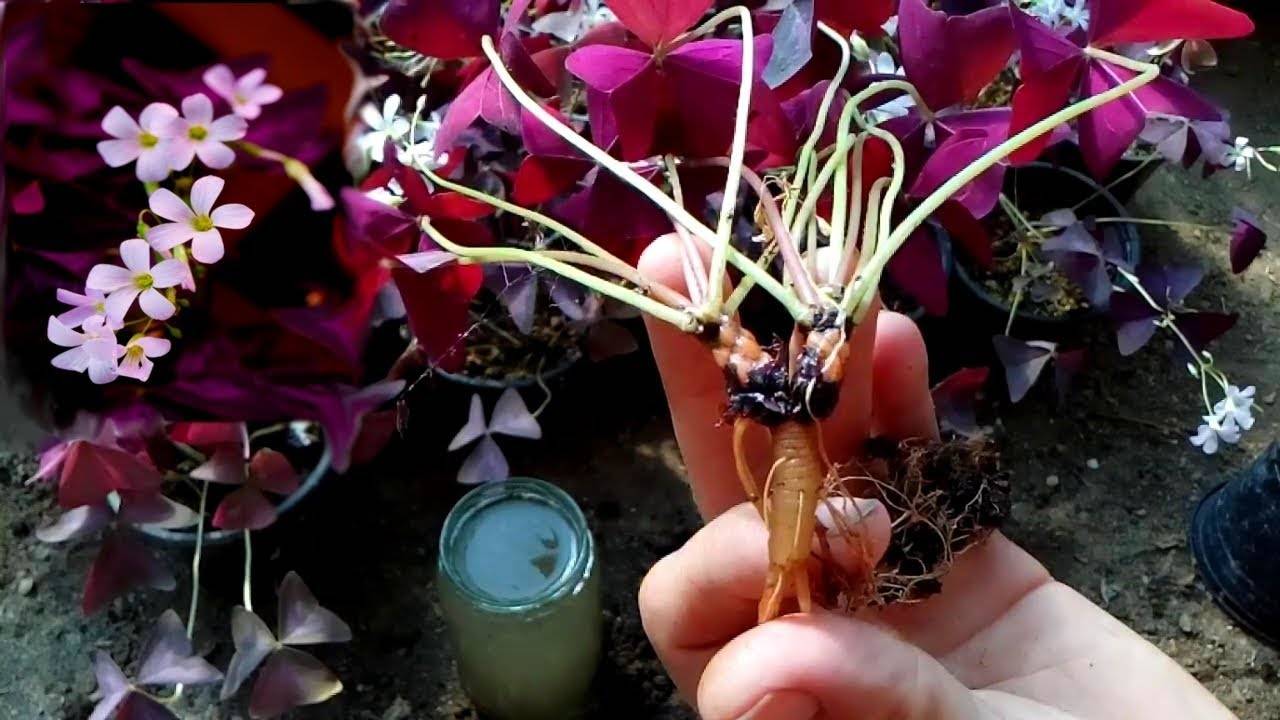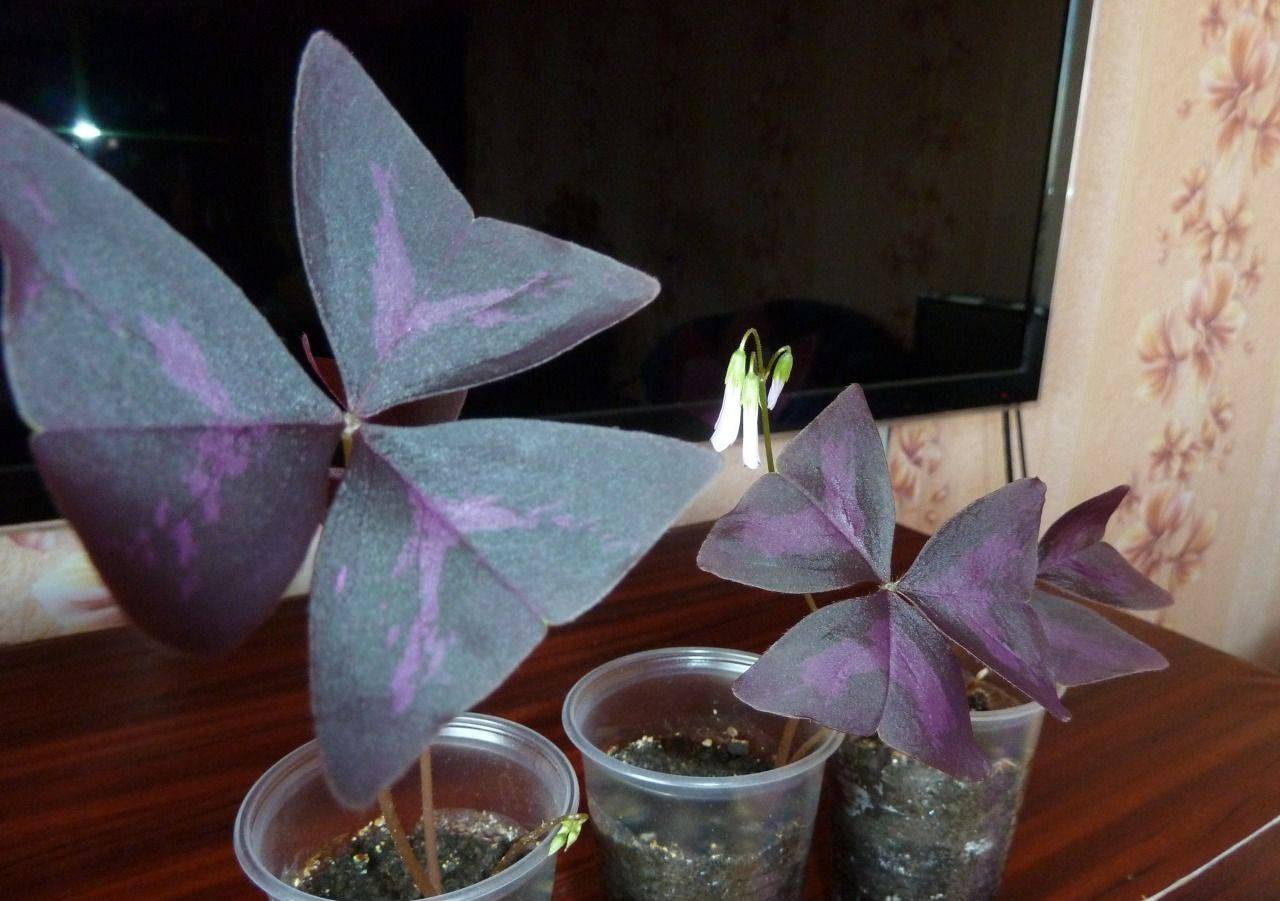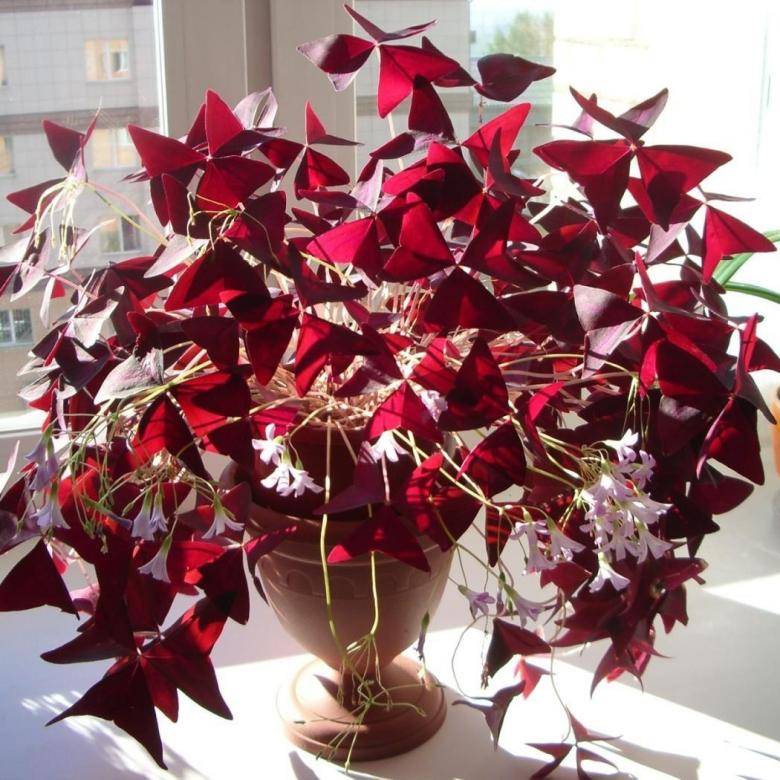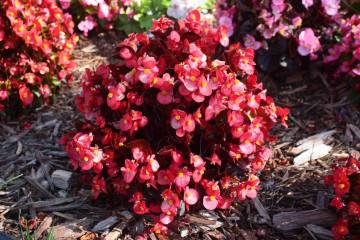Perennial garden oxalis - growing in the garden
Content:
Very often flower lovers prefer to grow plants with bright and large flowers in their backyards. But for the completeness of any picture, small touches are required, nuances, the correct arrangement of which complements the image and transforms it. This also applies to plants that gardeners do not always pay attention to. These include garden oxalis.
Perennial garden oxalis - what kind of flower is it?
Perennial garden acid is a plant that does not have a stunning appearance, its flowers are small, sometimes inconspicuous. However, it is a great addition to many other colors and can form a thick, fluffy carpet. Red and purple varieties of street sourwood successfully emphasize the juiciness of the greenery of the neighbors in the garden. Oxalis (another name for kislitsa) looks great on alpine slides, in rockeries. Another advantage is its love for shaded areas. This applies to both the northern sides and the shade that falls from the lush trees and shrubs growing in the neighborhood.
Short description
Botanical description of oxalis:
- most often it is a perennial, but there are also annual options;
- the rhizome is long and creeping, located very close to the topsoil. It has small processes - nodules or bulbs;
- stems reach 20 cm in height, ending in trifoliate leaves. There are also four-leafed forms. Outwardly, the leaves resemble clover;
- variable color of leaves, depending on the variety (purple, burgundy oxalis, monochromatic or two-color can grow in the garden);
- flowering occurs in May-June and lasts about a month;
- the peduncle is slightly above the stems, with 1-5 buds on it. The flowers consist of 5 petals, resemble a glass in shape. Color options - white, lilac, pink and light yellow;
- flowers are bisexual, so that insects are not required for pollination;
- fruits - capsules, inside of which are seeds with a dense skin.
What types of oxalis are best for growing in the garden
Perennial street oxalis in the garden is presented in different forms - heat-loving and frost-resistant. Many types of ornamental sorrel came to gardens and orchards from warm countries. They are grown as a pot plant, and from May to October they are planted in open ground, after which they are dug up and transferred to a warm place for the winter. The most popular types of thermophilic acidwood, the cultivation of which is possible in the country:
- triangular oxalis. The leaves of the variety are burgundy, purple, crimson, the flowers are always white. This plant is grown as an indoor plant, but in the summer it can be taken out into the garden;
- Regnella can be recognized by the leaves of a dark purple or green color, the length of which is 2 cm. In the summer, it is carried out into the street directly in pots.It is ideal for decorating areas under trees and shrubs, since it does not tolerate not only low, but also excessively high temperatures and prefers to grow in the shade;
- the purple variety came to Russia from South Africa. The leaves are green, slightly drooping, up to 7 cm in diameter, the flowers are bright pink or white. Perfect for decorating alpine slides.
Frost-resistant varieties of garden oxalis:
- carob oxalis is characterized by brownish-purple leaves, small yellow flowers. Often the carob variety of sour in the country is perceived as a weed, they try to get rid of it. But landscape designers use it in their projects, it is often used in city parks. If this purple oxalis grows in the garden, it is worth carefully monitoring and controlling its rapid growth;
- iron-leaved oxalis is one of the most spectacular. Voluminous leaves of an unusual shape with a large number of oval lobes. Flowers are silvery and spotted;
- red oxalis is one of the most popular varieties in the garden. They call it that due to the corresponding color of the leaves. Picky and pliable to care for.
Decorative frost-resistant oxalis in the garden most often does not need additional care and does not require shelter for the winter.
How to plant correctly in the country
Street decorative varieties of the oxalis flower are picky, and it is quite simple to get them in your summer cottage. It grows well in open areas, but prefers partial shade more. Planting plants and caring for garden sour in the open field, as a rule, do not cause problems.
Temperature
It is better to start breeding acid sour in the warm season. The specific disembarkation time depends on the planting material. For example, seeds can be sown in open ground as soon as the snow melts and the soil warms up a little. But then they will need to be covered with glass or polyethylene and periodically opened for ventilation.
Soil features
Forest varieties of this plant prefer moist, fertile forest soil. The appropriate conditions can be created in your flower bed. But wet and swampy soil are two different things, it is worth remembering. The second option is unacceptable. The optimum acidity level is neutral or slightly acidic. Drainage is required, compost or peat is desirable. If the soil is heavy, you will need to add sand.
Rules for caring for garden sour in the open field
It is difficult to find any other flower that will be as unpretentious as oxalis. Correct and timely watering and rare fertilization are all that is needed to create ideal conditions, so it is not difficult to take care of it.
Fertilization and watering
Watering is only necessary in hot weather. It should be systematic and moderate, it is not worth pouring over, since the roots can rot. Watering should be carried out during the active growing season. The soil should dry out by 2-3 cm. In the fall, watering is gradually reduced to nothing.
Top dressing is carried out infrequently with any mineral fertilizers for flowering plants. Sometimes organic matter can be applied in the form of a weak manure solution. The first feeding is in the spring, the next is the budding period, the third is a month after. The fertilizer concentration should be 2 times less than for other garden plants.
Reproduction of street acid
Reproduction of oxalis is possible by seed, vegetative methods or by cuttings.
Seeds
Seeds can be sown directly into open ground in late March - early April. They are scattered over the surface of a fertile soil mixture, a container will do.It is not necessary to sprinkle it with earth, but it is worth covering it with glass or film. The soil should be moistened daily with a spray bottle. Seedlings can appear in a week, but they can also appear in a month. The required temperature for germination is about 17 ° C.
Vegetative way
Vegetative propagation takes place by separating the bulbs or tubers from the main root. They represent the planting material. The order of the vegetative propagation of oxalis:
- Bulbs or tubers are planted in advance in a pot or container, 2-3 pcs. You can do without additional devices and plant them immediately in open ground at a distance of about 12 cm from each other. It is better to treat them with a manganese solution or a special disinfectant solution to avoid fungal infections.
- Young plants are sprinkled with soil and watered regularly.
- After 1.5 months, new adult plants will grow from the bulbs, ready to bloom.
Cuttings
Cuttings are always successful. It turns out to sprout even a single leaf. The selected part is placed in water or immediately planted in a soil mixture (consisting of turf, leaf, garden soil and humus in equal parts). After the roots have appeared, you can plant the acid plant in open ground.
Possible diseases and pests
Due to the fact that the leaves of the plant contain a lot of oxalic acid, oxalis bypasses most diseases. But with excessive watering, root rot and related diseases can occur. From insects, decorative acid can be damaged:
- shield;
- aphid;
- whitefly;
- red tick.
If found, it is necessary to spray the bushes with insecticides sold in special stores.
Signs and superstitions
Many signs and superstitions are associated with most plants. This fate did not pass by and sour. But all the signs are exceptionally good. So, the presence of oxalis in the house promises peace, harmony, mutual understanding, protection from quarrels and misunderstandings, promises meetings only with good, kind people and protects from bad ones. It is also believed that this plant helps single people find love, it contributes to the creation of a full-fledged, happy family. Depression and bad mood go away when sour acid appears in the house.
Garden oxalis is a unique plant that growers should pay attention to. Unpretentious, discreet at first glance, it will complement any landscape design. And for lovers of alpine slides, oxalis is a real lifesaver.
